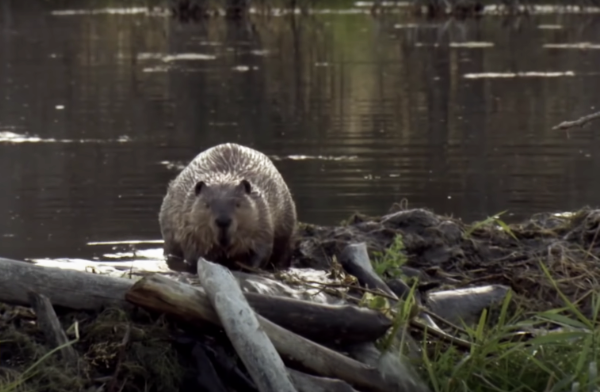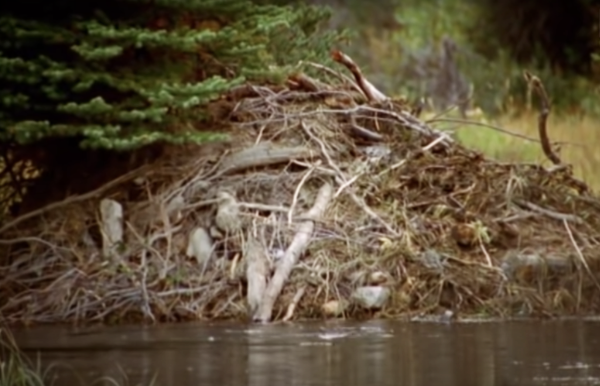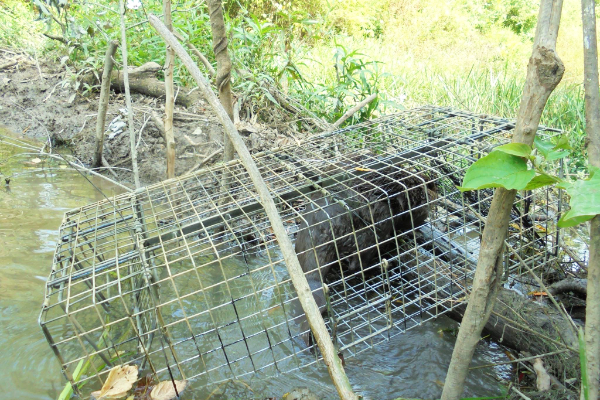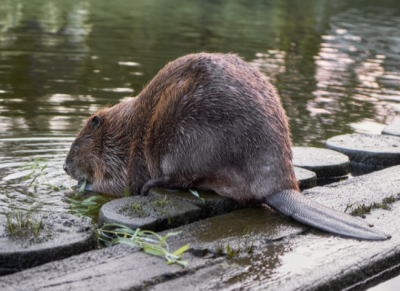DIY Beaver Removal

Beavers are hardworking creatures, able to reshape the environment to suit their needs and create their ideal habitat. While this can be incredibly beneficial to them and the other wildlife that's drawn to the newly created conditions, it can be very destructive for humans.
What impact will beavers have on my land?

Beavers build lodges out of branches and mud, usually in the middle of ponds, though they can also make them at the water's edge. They are accessible only by an underwater passage, a smart construction to protect them from predators. Lodges are not the only homes that beavers build; if the water bodies' banks are steep enough, they can dig out burrows.
Beaver homes rely on having a constant water level to keep the entry underwater, so they build dams. In doing so, they create ecosystems that support other wildlife, but may also cause flooding to lower-level areas. They also damage trees and cut them down as building materials and food sources. Removing many trees close to a water body can result in faster soil erosion and other detrimental effects to the environment.
How do I get rid of beavers?
Before removing beavers from your property, you should check with your local state to determine the regulations. For example, trapping may require a license, and only be allowed in a specific season.
Don't try to get rid of beavers by removing their dams. You will be at risk of drowning, and the beavers will rebuild, making it an exercise in frustration.
Fencing and barriers against beavers.
You can erect barriers and fences as a means to prevent beavers from moving onto your land. However, they aren't always useful. If you want to use exclusion as a method of control, it's best to wrap the base of trees with hardware cloth to protect them from the beavers. You will need to cover at least the bottom 3 feet of the tree, as beavers are quite large rodents. Make sure that you fasten cloth securely so that the beavers can't undo or break through it.
The downside is that this needs to be implemented before any beavers have settled into the area. If you need to cover a large area, it becomes impractical and more expensive.
Beavers are smart and resourceful creatures. Any fencing you put up may end up being used to build their lodge or dams. If you do want to install a barrier, it's best to use an electric fence placed between the water body and the trees, denying the beaver access.
Beaver Repellants
There currently aren't any commercial repellants that are effective at deterring beavers. However, you can try a textural repellant, rather than a scent-based one. Painting a mixture of paint and coarse sand on trees makes the beavers more likely to leave them alone, depending on food scarcity. It's a time and work-intensive means of dealing with the situation as it requires an application to the base of every tree that you want to protect.
Beaver Traps

Be mindful that trapping regulations vary between states, so make sure you find the relevant information before proceeding. It is also essential to know which traps are allowed in your state.
Trapping is one of the most efficient ways to remove beavers from an area. Knowing the best place to set traps will make this method even more productive, and you'll be able to catch the beavers within a shorter timeframe. It's also important to note that beavers are social creatures, with two to ten family members living in a lodge or burrow.
The most popular types of traps are:
Leghold traps
Also known as a 'foot-hold trap' or a 'restraining trap.' The trap is a spring-powered device consisting of a metal footplate and curved jaws; the beaver steps on the footplate, triggering the jaws to clamp shut around the leg. It is generally tethered to the ground or a tree by a short chain and spike.
Conibear traps
The conibear trap works the same way as the leghold trap; only it's bigger, often referred to as a 'body-holding' trap. It's intended to kill the animal instantly as two rectangular frames snap shut when activated by the trigger plate. However, it doesn't always do so.
Snares
Snares consist of a wire or cable loop with a locking device. As the beaver walks through the loop and along the trail, the snare tightens, trapping the beaver.
Live traps
Live traps capture the beaver without killing or harming it. They also require bait; the most effective is another beaver's castor scent, which you can buy commercially. The two most popular kinds of live traps are clamshell traps and cage traps.
Clamshell traps are effective but expensive and cumbersome. If you go with a cage trap, you'll need to use the larger sizes; remember that beavers are large rodents. The best site for live traps is on the beaver "slides," where they enter and exit the water.
Finding the best place to put a beaver trap
It is best to put your beaver trap somewhere the beaver is most likely to spring it. Beavers establish and use trails between areas they frequent, such as between their home and a food source. They also use the same spots to move in and out of the water, smoothing the bank and creating "slides." This will be where any established trails will begin and is a sure spot for placing traps.
While they are a useful measure for removing the current family of beavers from your property, one problem with traps is that they are only a temporary solution. If one family of beavers has moved in, it's probably a prime location and will attract more. Another option is to minimize the flooding potential. You can do this by installing a beaver pipe.
Beaver pipe
If you don't wish to remove the beavers, however, you want to prevent flooding, you can install a beaver pipe. This device (and its variations: Clemson beaver pond leveler, beaver deceivers, etc.) maintains the water flow from an area without being detected by the beavers.
A beaver pipe allows the water to continue to flow from the pond it's installed in, even if there is a beaver dam. You can buy kits, or make one yourself from thick PVC pipe. The end of the tubing that rests in the pond will have holes cut into it to allow the free flow of water even if the end of the pipe becomes blocked. Another crucial component is the wire cage around the top end of the pipe to prevent the beavers from plugging it.
A variation on this; the beaver deceiver, is a trapezoidal wire fence set up in front of culverts to prevent beavers from creating a dam over it.
When considering how to deal with beavers, weigh up your options. Depending on where they make their home, you may not need to take action, or you may only need to install a beaver pipe. If you do need to catch them and have them removed altogether, check your state laws before proceeding so that you don't break regulations.

